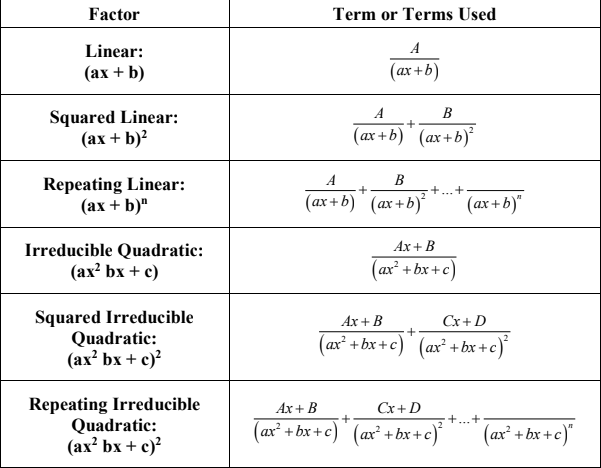Table of Contents
Partial Fraction Decomposition
Partial Fraction Decomposition (PFD) is a method to rewrite a rational function into a sum of simpler rational expressions. For PFD to work, degree of numerator < degree of denominator.
Factor Decomposition Table
Steps
Step 0: Divide Function
Only do this if the numerator's degree is greater than or equal to the denominator's. Use Polynomial Division to divide the function. PFD can be used on the remainder as the degrees should be acceptable for PFD.
Step 1: Factor Denominator
Completely factor the denominator.
Step 2: Setup PFD
For each factor in the denominator, use the lookup table to determine what term(s) should be present in the PFD. For every term in the lookup table, there are constants A, B, C, … Z. For every term be sure to increment the letter so that no constants repeat.
Step 3: Solving for Constants
To solve for A, B, C, … Z, first you must add together all terms of the PFD. This means finding a common denominator. Afterwards, you can drop the denominator, distribute the constants in, and group all terms by degree of x. By doing this, you can create a system of equations for constants that share a common factor (i.e. x^2 or x). Constants without a variable are grouped into one aswell1). The sum of the grouped constants is equal to the coefficient of the term with the common factor from the original function. There should be enough equations to solve for all constants present in the PFD.
Step 4: Substituting for Solution
Return back to the answer of Step 2. You can substitute the constants with the solutions from Step 3 for the answer.
